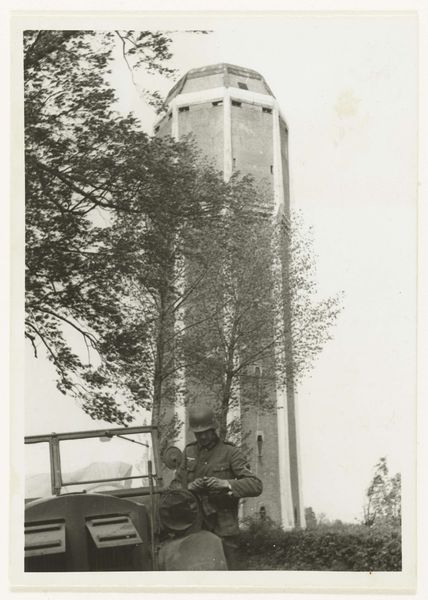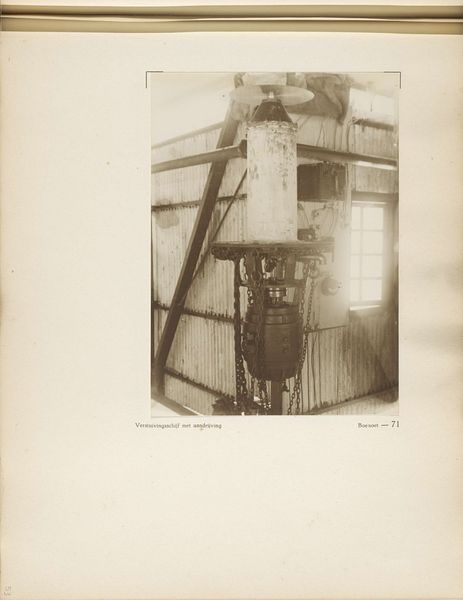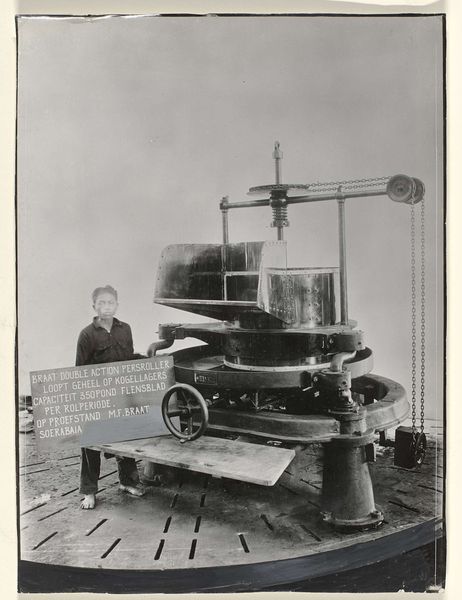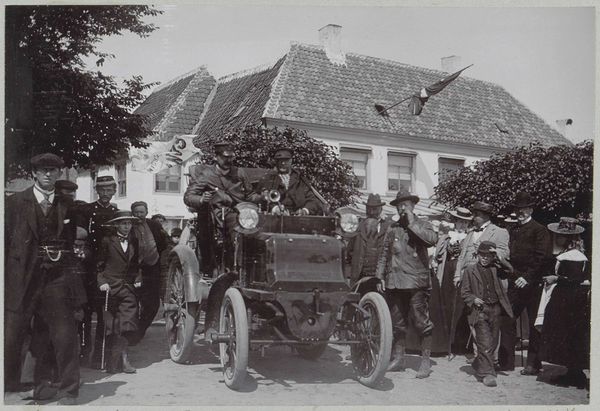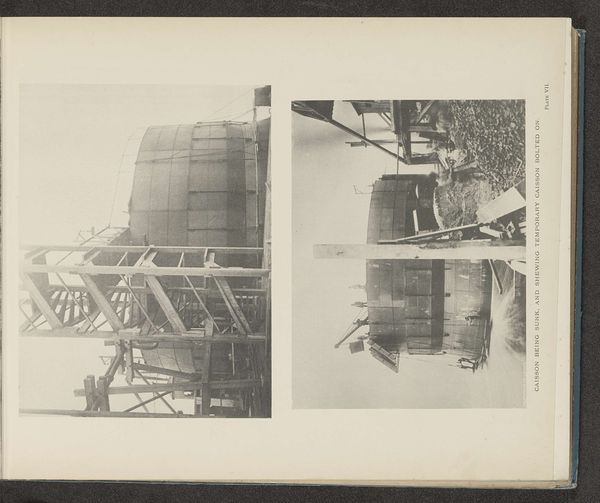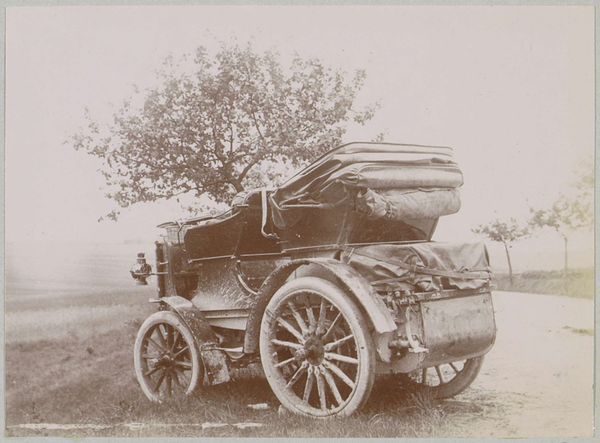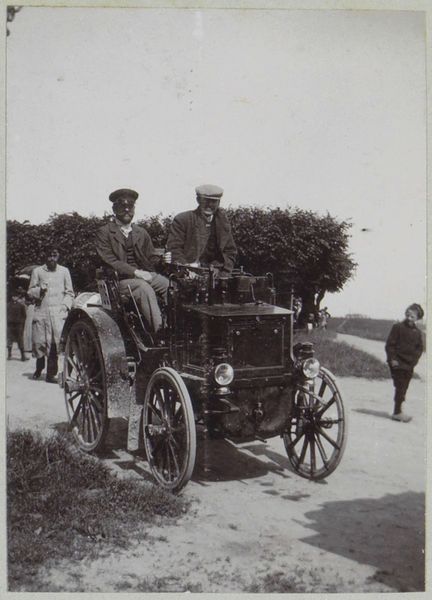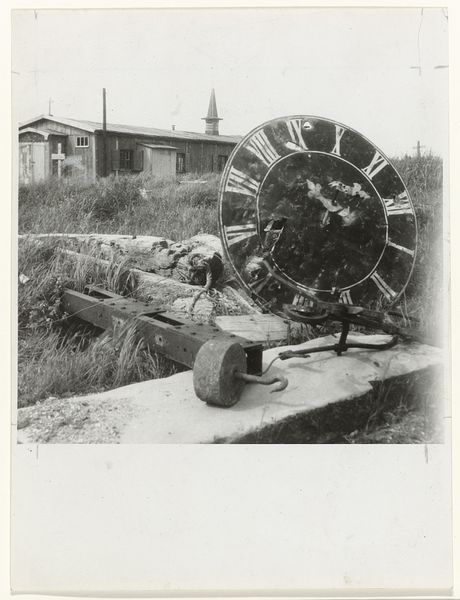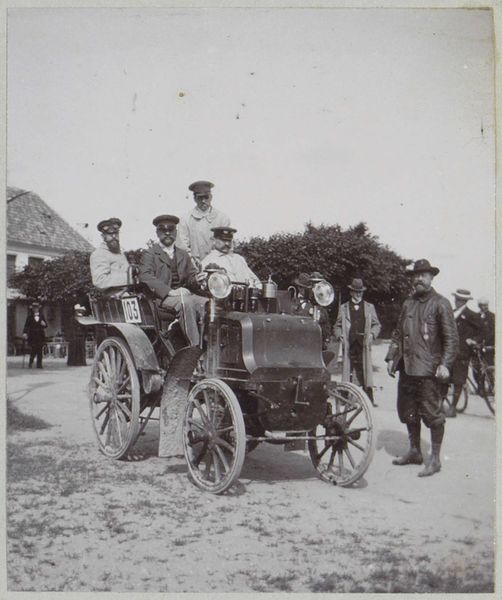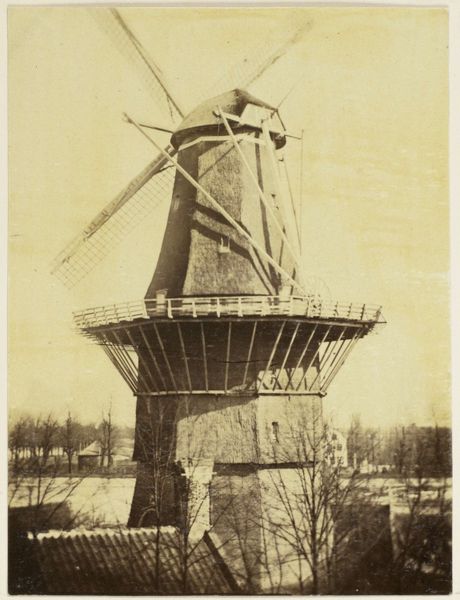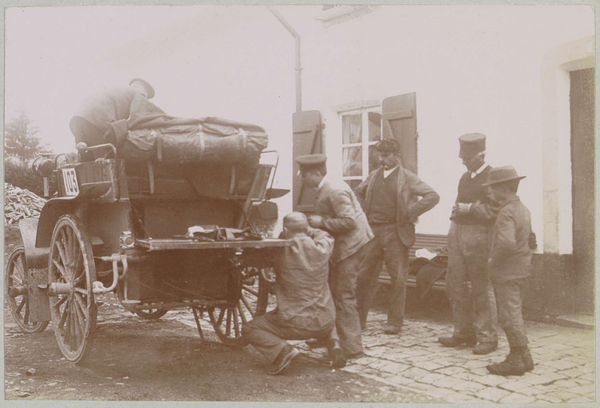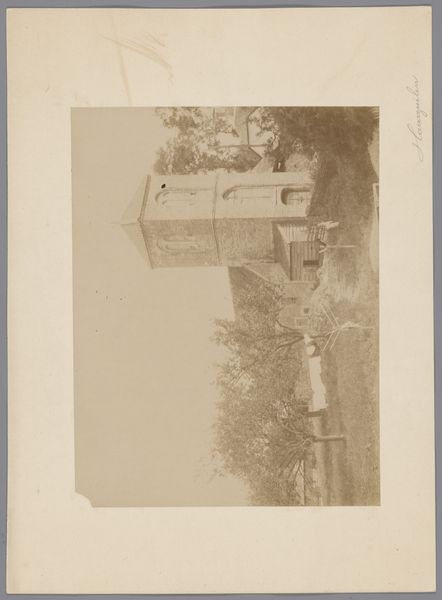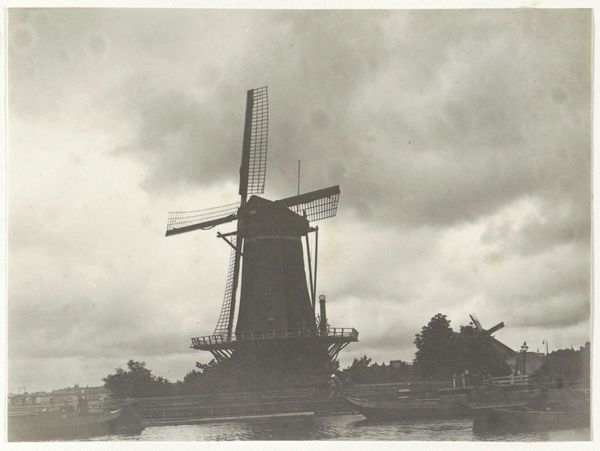
Soldaten in een Hupmobile voor korenmolen de Eendracht in Alphen aan den Rijn, tijdens de algehele mobilisatie 1914 - 1918
0:00
0:00
print, photography, gelatin-silver-print
#
portrait
#
dutch-golden-age
#
pictorialism
# print
#
landscape
#
photography
#
group-portraits
#
gelatin-silver-print
#
history-painting
#
realism
Dimensions: height 114 mm, width 87 mm
Copyright: Rijks Museum: Open Domain
Editor: So, this gelatin silver print, "Soldaten in een Hupmobile voor korenmolen de Eendracht in Alphen aan den Rijn, tijdens de algehele mobilisatie," by Dirk van der Mark, made between 1914 and 1918, strikes me as incredibly staged, almost like propaganda. What story do you think it's trying to tell? Curator: It's crucial to understand this image within the context of the First World War and the Netherlands' neutrality. Though neutral, the Dutch mobilized their army, a complex societal strain. How do you see the relationship between the soldiers in their Hupmobile and the traditional image of the windmill? Editor: Well, the windmill seems to represent traditional Dutch life, while the car suggests modernity and perhaps a sense of forward momentum. Is the photo trying to portray the army as protectors of that traditional way of life? Curator: Exactly! But also consider who is *not* pictured here. Who benefitted from a protected neutral market and whose labour powered the traditional image? These are young men going off to defend a nation, but where are the women, the labourers, the colonial subjects who sustain it? This idyllic scene obscures other voices and other stories. Editor: So you're saying it's a romanticized and incomplete picture of the time? Curator: Precisely. The photograph uses a very specific visual language to reinforce a national narrative, even while obscuring a larger truth about whose interests were really being served by the "general mobilisation". The Hupmobile may speak to modernity, but it is crucial to reflect on the economic disparities of this progress. Editor: I hadn't thought about it that way. It’s much more complex than I initially perceived. Thank you for showing me that the narratives presented within art, like this photograph, have broader implications about race, gender and class. Curator: And I am glad we’ve highlighted how much seemingly simple artworks have to tell us, especially if we listen to those often muted by them.
Comments
No comments
Be the first to comment and join the conversation on the ultimate creative platform.
